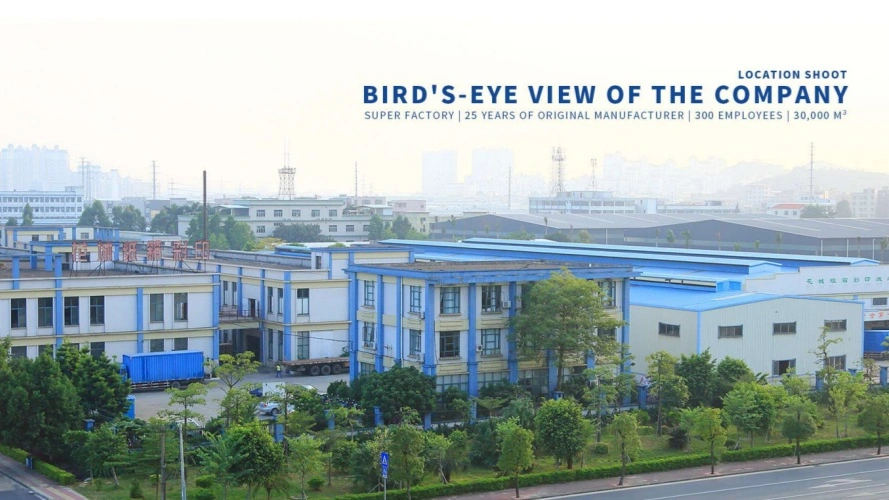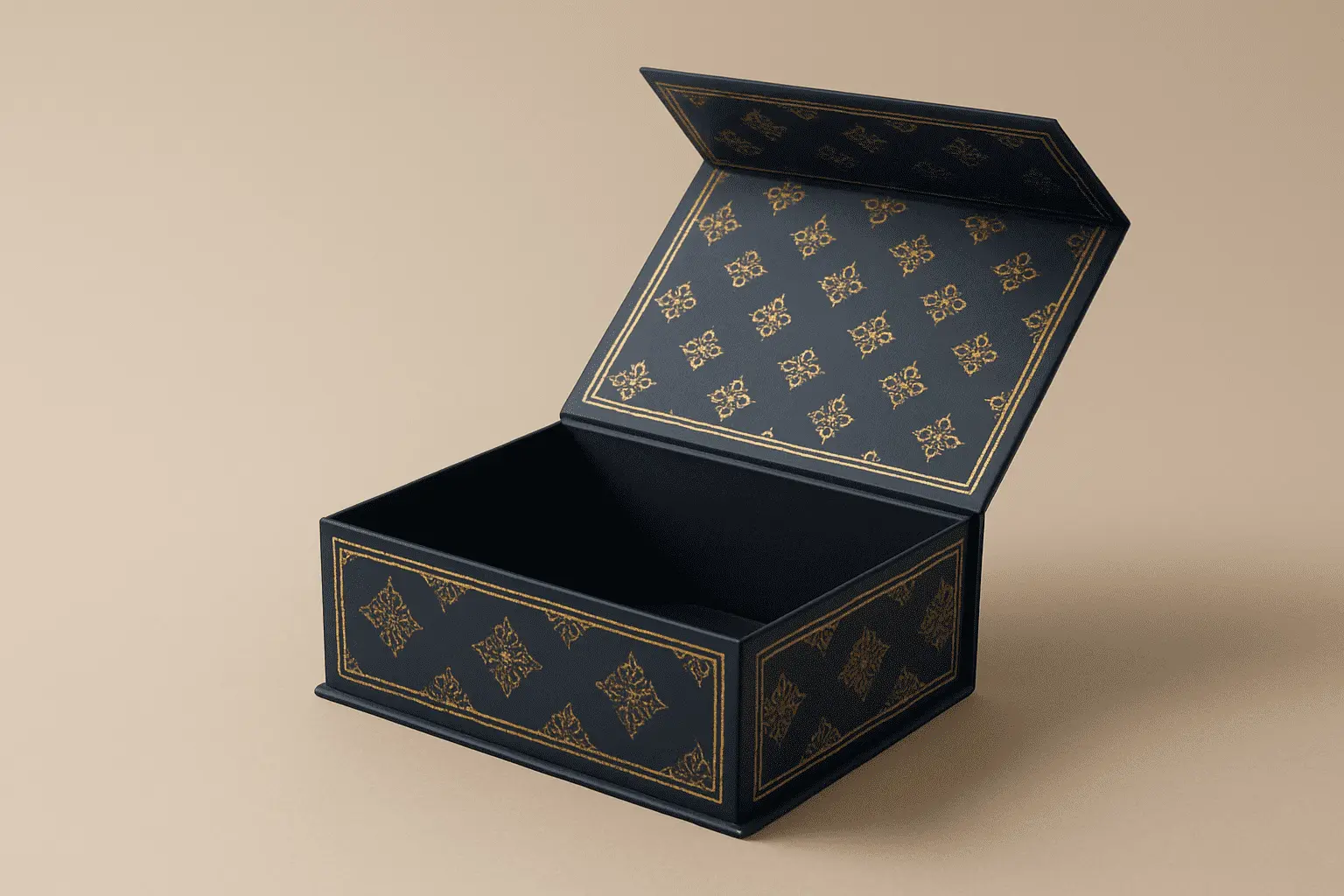How to Launch a Subscription Box with Print-on-Demand Packaging?
The subscription box industry has revolutionized how consumers discover and receive products, creating a $22.7 billion market that continues to expand rapidly. Launching a successful subscription box business requires careful consideration of multiple factors, with packaging being one of the most critical elements that directly impacts customer satisfaction and brand perception. Print-on-demand packaging offers entrepreneurs a flexible, cost-effective solution that eliminates the need for large inventory investments while maintaining professional presentation standards. This comprehensive guide explores the essential steps, strategies, and considerations for launching your subscription box venture using print-on-demand packaging solutions that can adapt to your business growth and seasonal demands.

Understanding Print-on-Demand Packaging for Subscription Services
Print-on-demand packaging represents a paradigm shift in how subscription box businesses approach their packaging needs, offering unprecedented flexibility and cost efficiency. Unlike traditional bulk packaging orders that require significant upfront investments and storage space, print-on-demand solutions allow businesses to order exactly what they need, when they need it. This approach is particularly beneficial for subscription box startups that may experience fluctuating subscriber numbers or seasonal variations in demand.
The Evolution of Subscription Box Packaging
The subscription box market has evolved significantly since its inception, with packaging playing an increasingly important role in customer retention and brand differentiation. Modern consumers expect more than just functional packaging; they desire an unboxing experience that creates excitement and reinforces brand values. Print-on-demand packaging technology has advanced to meet these expectations, offering high-quality printing capabilities, customizable designs, and sustainable material options that align with contemporary consumer preferences. Subscription boxes benefit tremendously from print-on-demand packaging because it allows for rapid prototyping and testing of different designs without committing to large quantities. This flexibility enables businesses to respond quickly to customer feedback, seasonal trends, or branding changes. Companies can experiment with different box sizes, materials, and design elements to optimize their packaging for both protection and presentation. The technology supports various printing methods including offset, digital, and flexographic printing, ensuring that subscription box designs can achieve professional-quality results regardless of order quantity.
Material Selection and Customization Options
The foundation of successful subscription box packaging lies in selecting appropriate materials that balance durability, sustainability, and visual appeal. Print-on-demand services typically offer multiple material options, each with distinct characteristics suited to different subscription box applications. SBS C1S (Solid Bleached Sulfate - Coated One Side) provides an exceptionally smooth printing surface ideal for premium subscription boxes in cosmetics or luxury goods categories. The bright white appearance and excellent print quality make it perfect for brands seeking to convey sophistication and quality. For subscription boxes requiring more budget-conscious solutions without compromising visual impact, CCNB (Clay Coated News Back) offers excellent print performance at competitive pricing. This material features a white clay-coated front for high-quality graphics while utilizing recycled content that supports sustainability initiatives. Many subscription box businesses find this material ideal for food items, toys, or general consumer goods where cost efficiency is important but professional appearance remains essential. Corrugated materials provide structural strength essential for shipping subscription boxes safely. Single-wall options like E-flute (1.3-2.1mm) offer ultra-thin profiles with excellent crush resistance, making them ideal for lightweight subscription boxes where space efficiency and premium graphics are priorities. For heavier subscription box contents, C-flute (3.6-4.1mm) provides balanced cushioning and compression strength, ensuring products arrive undamaged while maintaining cost-effectiveness.
Design Integration and Brand Consistency
Successful subscription box launches require cohesive design strategies that extend beyond simple logo placement to create memorable brand experiences. Print-on-demand packaging allows for sophisticated design integration that can include variable data printing, personalized messaging, and seasonal adaptations. The key is developing a design system that maintains brand consistency while offering flexibility for product variations or special editions. Effective subscription box design considers both exterior and interior elements, creating a complete unboxing journey. The exterior design should immediately communicate brand identity and create anticipation, while interior elements can include branded tissue paper, thank-you cards, or product guides that enhance the customer experience. Print-on-demand technology supports various finishing options including UV coating, matte finishes, metallic effects, and spot varnishing that add tactile and visual interest to subscription box packaging.
Strategic Planning and Market Research
Launching a successful subscription box requires comprehensive market research and strategic planning that extends far beyond product selection. Understanding your target audience, competitive landscape, and market positioning forms the foundation for all subsequent decisions, including packaging choices. Print-on-demand packaging offers unique advantages during the planning phase by enabling rapid prototyping and market testing without significant financial commitments.
Target Audience Analysis and Packaging Preferences
Modern subscription box consumers have specific expectations regarding packaging quality, sustainability, and unboxing experiences. Research indicates that 72% of consumers consider packaging design when making purchasing decisions, while 67% are more likely to recommend brands with premium packaging experiences. Understanding these preferences is crucial for subscription box success, as packaging directly impacts customer satisfaction and retention rates. Different demographic segments have varying packaging preferences that should influence your subscription box design decisions. Millennials and Gen Z consumers typically prioritize sustainable packaging materials and Instagram-worthy unboxing experiences, making eco-friendly options like brown kraft or recycled materials attractive choices. These demographics also value personalization and unique design elements that reflect their individual preferences and lifestyle choices. Professional and luxury market segments often prefer premium materials like SBS C2S or metallic finishes that convey sophistication and quality. These subscription box customers are typically willing to pay premium prices for superior packaging experiences that reflect their status and taste preferences. Understanding these nuances allows businesses to select appropriate print-on-demand materials and design approaches that resonate with their target markets.
Competitive Analysis and Differentiation Strategies
The subscription box market is highly competitive, with thousands of services competing for consumer attention and loyalty. Successful launches require clear differentiation strategies that extend to packaging design and presentation. Print-on-demand packaging offers unique opportunities for differentiation through customization options that may be cost-prohibitive with traditional packaging approaches. Analyzing competitor packaging reveals opportunities for differentiation through material choices, design aesthetics, functional features, or sustainability initiatives. Many subscription box services use standard brown shipping boxes with printed labels, creating opportunities for businesses that invest in custom-designed packaging to stand out significantly. Print-on-demand technology enables sophisticated design execution that can rival much larger competitors without requiring substantial upfront investments. Successful differentiation often involves identifying unmet needs in existing subscription box categories. This might include improved product protection, enhanced unboxing experiences, or stronger sustainability credentials. Print-on-demand packaging can address these needs through specialized materials, innovative structural designs, or enhanced printing capabilities that create competitive advantages.
Business Model Development and Packaging Integration
Effective subscription box business models integrate packaging considerations from the initial planning stages rather than treating packaging as an afterthought. Print-on-demand packaging offers flexibility that supports various business model approaches, from fixed monthly boxes to customizable selections based on customer preferences. The subscription box business model should account for packaging costs as a percentage of total product value, typically ranging from 10-20% depending on the product category and price point. Print-on-demand packaging helps optimize these costs by eliminating waste from overproduction while enabling premium presentation that supports higher price points. This cost structure flexibility is particularly valuable for new businesses that may need to adjust pricing or product selections based on initial market response. Packaging integration also involves considering operational aspects like assembly time, storage requirements, and shipping logistics. Print-on-demand solutions can include pre-glued boxes that reduce assembly time, custom inserts that protect products during shipping, and optimized dimensions that minimize shipping costs. These operational efficiencies contribute directly to profitability and scalability of subscription box ventures.
Implementation and Operations Management
Successfully launching a subscription box with print-on-demand packaging requires careful attention to operational details that ensure consistent quality and timely delivery. The implementation phase involves establishing supplier relationships, quality control procedures, and fulfillment processes that can scale with business growth while maintaining customer satisfaction standards.
Supplier Selection and Partnership Development
Choosing the right print-on-demand packaging supplier represents one of the most critical decisions in subscription box implementation. The ideal supplier should offer comprehensive capabilities including design support, material variety, quality assurance, and reliable delivery schedules. Established suppliers with experience in subscription box packaging understand the unique requirements of this market segment and can provide valuable guidance throughout the implementation process. Evaluating potential suppliers requires assessing their production capabilities, quality standards, and customer service approaches. Look for suppliers with advanced printing equipment like KBA106-(9+1) UV printing machines or Heidelberg XL162-6L printing machines that can deliver consistent, high-quality results. Manufacturing facilities should demonstrate ISO certifications, environmental management systems, and established quality control procedures that ensure subscription box packaging meets professional standards consistently. The supplier relationship should extend beyond simple order fulfillment to include ongoing support for design optimization, material selection, and process improvements. Experienced suppliers can provide insights into emerging trends, cost optimization opportunities, and technical innovations that benefit subscription box operations. This partnership approach becomes particularly valuable as businesses scale and require more sophisticated packaging solutions or expanded service capabilities.
Quality Control and Brand Standards
Maintaining consistent quality standards across all subscription box packaging is essential for building customer trust and brand reputation. Print-on-demand suppliers should implement comprehensive quality control procedures that verify print quality, material consistency, structural integrity, and dimensional accuracy. These standards should be clearly defined and regularly monitored to ensure subscription box packaging meets brand requirements consistently. Quality control procedures should address multiple aspects of subscription box packaging including color accuracy, print registration, die-cutting precision, and gluing quality. Advanced suppliers utilize color management systems like G7 certification to ensure print colors match brand specifications across different production runs. This consistency is particularly important for subscription boxes where customers receive multiple shipments and expect uniform brand presentation. Brand standards documentation should specify acceptable quality ranges, approval procedures, and corrective action protocols for addressing quality issues. This documentation serves as a communication tool between the subscription box business and print-on-demand supplier, ensuring clear expectations and consistent results. Regular quality audits and supplier performance reviews help maintain standards while identifying opportunities for continuous improvement.
Fulfillment Integration and Logistics Optimization
Integrating print-on-demand packaging with subscription box fulfillment operations requires careful coordination to ensure timely delivery and cost efficiency. The packaging procurement schedule must align with product sourcing, inventory management, and shipping deadlines to maintain consistent customer experiences. Effective integration often involves establishing buffer inventory levels that protect against supply chain disruptions while minimizing carrying costs. Fulfillment operations should be designed to accommodate print-on-demand packaging characteristics including delivery schedules, storage requirements, and assembly procedures. Some print-on-demand suppliers offer just-in-time delivery services that coordinate directly with fulfillment schedules, reducing inventory carrying costs and storage space requirements. This coordination becomes particularly valuable for subscription boxes with variable order quantities or seasonal fluctuations. Logistics optimization involves analyzing the total cost of packaging including procurement, storage, handling, and shipping expenses. Print-on-demand packaging can often reduce total logistics costs despite potentially higher unit costs by eliminating waste, reducing storage requirements, and improving shipping efficiency through optimized dimensions. These optimizations contribute directly to subscription box profitability and operational efficiency.
Conclusion
Launching a successful subscription box with print-on-demand packaging requires strategic planning, careful supplier selection, and attention to operational details that ensure consistent customer experiences. The flexibility and cost efficiency of print-on-demand solutions make them ideal for startups and growing businesses that need professional packaging without large upfront investments. Success depends on understanding target market preferences, developing strong supplier partnerships, and implementing quality control procedures that maintain brand standards consistently.
Ready to launch your subscription box venture with professional packaging solutions? Partner with Guangzhou Fetching Color Printing & Packaging Ltd., a leading China subscription box factory with over 20 years of experience serving 1,000+ loyal customers worldwide. Our 35,000 m² facility and 300+ skilled employees specialize in creating premium subscription box packaging that enhances your brand and delights customers. As a trusted China subscription box supplier and China subscription box manufacturer, we offer comprehensive print-on-demand solutions with competitive subscription box price options and subscription box for sale inventory programs. Whether you need small quantities for testing or large volumes for scaling, our China subscription box wholesale services provide the flexibility and quality your business demands. Contact our packaging experts today at public@fetchingprinting.com to discover how our advanced printing technology and sustainable materials can transform your subscription box vision into reality.
References
1. Chen, L., & Wang, M. (2023). "Print-on-Demand Packaging Solutions for E-commerce Growth." Journal of Packaging Technology and Innovation, 15(3), 78-92.
2. Rodriguez, A., Thompson, K., & Lee, S. (2024). "Sustainable Packaging Strategies in the Subscription Economy." International Review of Business and Marketing, 31(4), 145-162.
3. Johnson, R., & Patel, N. (2023). "Consumer Preferences and Unboxing Experiences in Subscription Commerce." Marketing Research Quarterly, 28(2), 203-218.
4. Martinez, C., Zhang, H., & Brown, D. (2024). "Supply Chain Optimization for Print-on-Demand Manufacturing." Operations Management Today, 19(1), 34-49.

Based on your location and order quantity, you will have the opportunity to receive a limited time free shipping promotion!

Corporate Purpose
